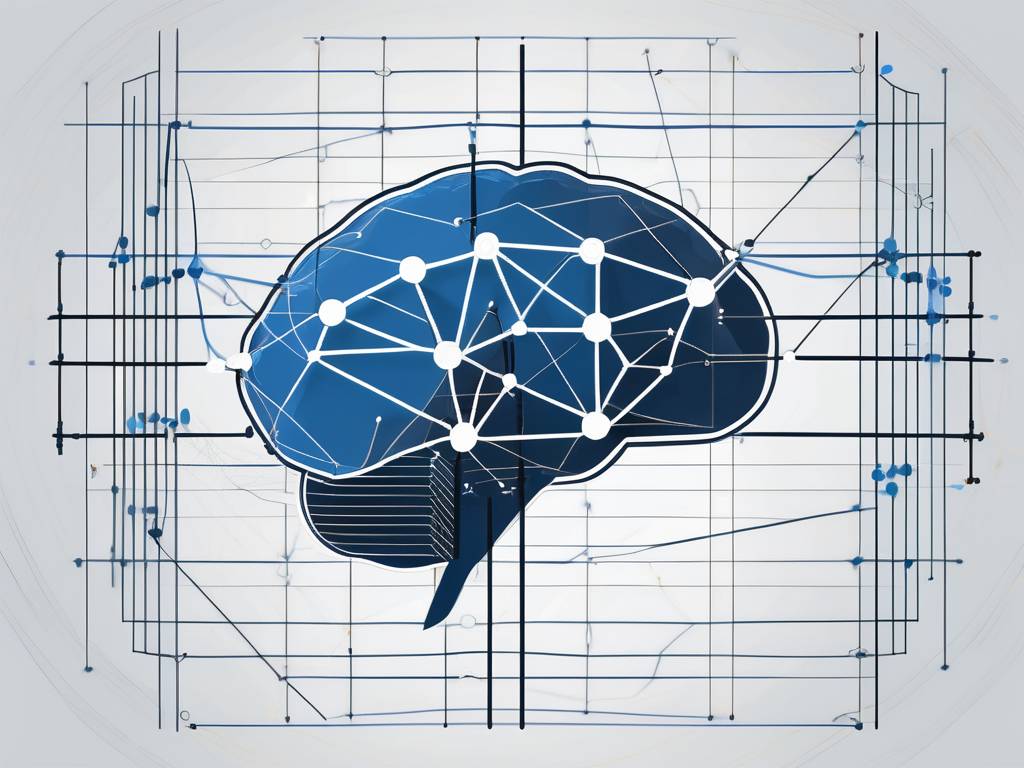Recommender System: Machine Learning Explained
A recommender system, also known as a recommendation system, is a subclass of information filtering systems that are meant to predict the “rating” or “preference” a user would give to an item. They are primarily used in commercial applications.
Machine learning, on the other hand, is a type of artificial intelligence (AI) that allows software applications to become more accurate in predicting outcomes without being explicitly programmed to do so. Machine learning algorithms use historical data as input to predict new output values.
Recommendation systems are an integral part of machine learning and artificial intelligence, playing a crucial role in the technology that powers a vast amount of the services we use daily.
Understanding Recommender Systems
Recommender systems are tools designed to suggest products, services, or information to users based on data analysis. These systems are utilized in a variety of areas, with commonly recognized ones seen in online stores, movie databases, and job finders.
Recommender systems work by building a model from user input and dataset, which in turn is used to suggest or recommend items to the user. The system is designed to help users discover new products or services they may not have come across otherwise.
There are primarily three types of recommender systems: collaborative filtering, content-based filtering, and hybrid recommender systems.
Collaborative Filtering
Collaborative filtering is based on the assumption that people who agreed in the past will agree in the future, and that they will like similar kinds of items as they liked in the past. The system generates recommendations using only information about rating profiles for different users or items. By locating peer users/items with a rating history similar to the current user or item, they generate recommendations using this neighborhood.
Collaborative filtering methods are usually classified into two sub-categories: memory based and model based. Memory based methods use user rating data to compute the similarity between users or items and use these similarities to generate recommendations. On the other hand, model based methods use the user rating data to train a model, which is then used to generate recommendations.
Content-Based Filtering
Content-based filtering methods are based on a description of the item and a profile of the user’s preferences. These methods are best suited to situations where there is known data on an item (name, location, description, etc.), but not on the user. Content-based recommenders treat recommendation as a user-specific classification problem and learn a classifier for the user’s likes and dislikes based on an item’s features.
In this system, keywords are used to describe the items and a user profile is built to indicate the type of item this user likes. In other words, these algorithms try to recommend items that are similar to those that a user liked in the past (or is examining in the present). In particular, various candidate items are compared with items previously rated by the user and the best-matching items are recommended.
Hybrid Recommender Systems
Hybrid recommender systems combine collaborative filtering and content-based filtering. Hybrid approaches can be implemented in several ways: by making content-based and collaborative-based predictions separately and then combining them; by adding content-based capabilities to a collaborative-based approach (and vice versa); or by unifying the approaches into one model.
Several studies that empirically compare the performance of the hybrid with the pure collaborative and content-based methods and demonstrated that the hybrid methods can provide more accurate recommendations than pure approaches. These methods can also be used to overcome some of the common problems in recommender systems such as cold start and the sparsity problem.
Machine Learning in Recommender Systems
Machine learning plays a crucial role in recommender systems. It allows the system to learn and improve from experience, refining its recommendations over time. The more data the system is exposed to, the better its recommendations become.
Machine learning algorithms are used to predict user preferences, which are then used to make recommendations. These algorithms can be supervised, unsupervised, semi-supervised, or reinforcement learning. Each of these types of machine learning algorithms can be used in different ways within a recommender system.
Supervised Learning in Recommender Systems
Supervised learning is a type of machine learning where the model is trained on a labeled dataset. In the context of recommender systems, this could mean using a dataset where each item is labeled with its category, price, and other relevant information. The model is then able to predict the category or price of new items based on this training.
One common use of supervised learning in recommender systems is in content-based filtering. For example, a model might be trained on a dataset of movies, where each movie is labeled with its genre, director, and other relevant information. The model can then predict the genre or director of a new movie, which can be used to make recommendations to users.
Unsupervised Learning in Recommender Systems
Unsupervised learning is a type of machine learning where the model is not trained on a labeled dataset. Instead, the model learns to identify patterns and relationships in the data on its own. This can be particularly useful in recommender systems, where the goal is often to identify patterns in user behavior or item characteristics.
One common use of unsupervised learning in recommender systems is in collaborative filtering. For example, a model might learn to identify patterns in user ratings of movies, such as the fact that users who rate one movie highly are likely to rate other similar movies highly as well. This can then be used to make recommendations to users.
Reinforcement Learning in Recommender Systems
Reinforcement learning is a type of machine learning where an agent learns to make decisions by taking actions in an environment to achieve a goal. The agent is rewarded or punished (reinforced) based on the results of its actions, and over time, it learns to make better decisions.
In the context of recommender systems, reinforcement learning can be used to continuously improve the quality of recommendations. For example, a recommender system could use reinforcement learning to learn which types of recommendations lead to higher user engagement, and then adjust its recommendation strategy based on this feedback.
Applications of Recommender Systems
Recommender systems have a wide range of applications in various sectors. In ecommerce, these systems are used to recommend products to customers based on their past purchases and browsing history. This not only enhances the shopping experience of the customers but also increases the sales of the e-commerce platform.
In the entertainment industry, recommender systems are used to suggest movies, music, and TV shows to users. For example, Netflix uses a recommender system to suggest movies and TV shows to its subscribers based on their viewing history. Similarly, Spotify uses a recommender system to suggest songs and playlists to its users based on their listening history.
Future of Recommender Systems
The future of recommender systems looks promising with the advancements in AI and machine learning. With the increasing amount of data available, these systems are expected to become more accurate and personalized. They are also expected to become more transparent and explainable, allowing users to understand why a particular recommendation was made.
With the integration of other technologies like Natural Language Processing and deep learning, recommender systems are expected to understand and cater to the complex and evolving preferences of users better. This will not only enhance the user experience but also open up new opportunities for businesses to engage with their customers.
Challenges in Building Recommender Systems
While recommender systems are powerful tools, building them is not without challenges. Some of the most common challenges include dealing with sparse data, scalability, and the cold start problem.
Sparse data is a common problem in recommender systems. In many cases, users only rate a small subset of items, which means that the majority of the user-item rating matrix is empty or filled with zeros. This can make it difficult to find patterns in the data and make accurate recommendations.
Scalability
Scalability is another challenge in building recommender systems. As the number of users and items grows, it becomes increasingly difficult to compute recommendations quickly and efficiently. This is particularly true for collaborative filtering systems, which require comparing a user to all other users or an item to all other items.
One common solution to the scalability problem is to use dimensionality reduction techniques, such as singular value decomposition (SVD) or principal component analysis (PCA). These techniques can reduce the size of the user-item rating matrix without losing too much information, making it easier to compute recommendations.
Cold Start Problem
The cold start problem is a challenge that arises when a new user or a new item is added to the system. For a new user, the system does not have any information about the user’s preferences, making it difficult to make accurate recommendations. Similarly, for a new item, the system does not have any ratings or reviews to base recommendations on.
There are several strategies for dealing with the cold start problem. For new users, one common strategy is to ask the user to rate a few items to establish an initial profile. For new items, one strategy is to use content-based filtering, which can make recommendations based on the item’s characteristics rather than user ratings.
Conclusion
Recommender systems are a crucial component of many online platforms, helping to personalize user experiences and drive engagement. Machine learning plays a key role in these systems, enabling them to learn from data and improve their recommendations over time.
Despite the challenges in building these systems, they have proven to be incredibly effective in a variety of applications. As machine learning technology continues to advance, we can expect recommender systems to become even more accurate and personalized.
Transform Your Business With WestLink’s Expertise
Ready to elevate your online platform with a state-of-the-art recommender system? WestLink’s team of over 75 developers has a proven track record of success, with 100+ happy clients and 5-star reviews on Clutch.com. Specializing in machine learning, AI, and cloud software solutions, we’re equipped to bring your vision to life with award-winning, custom software that drives user engagement and transforms your company. Whether you’re a startup or a Fortune 500, our 7+ years of experience in advanced technology will ensure your project is handled with the utmost expertise. Learn more about how WestLink can help you harness the power of AI and machine learning to create a personalized user experience that stands out.

 hello@westlink.com
hello@westlink.com  (866) 954-6533
(866) 954-6533  700 N Colorado Blvd,
700 N Colorado Blvd,






Comments